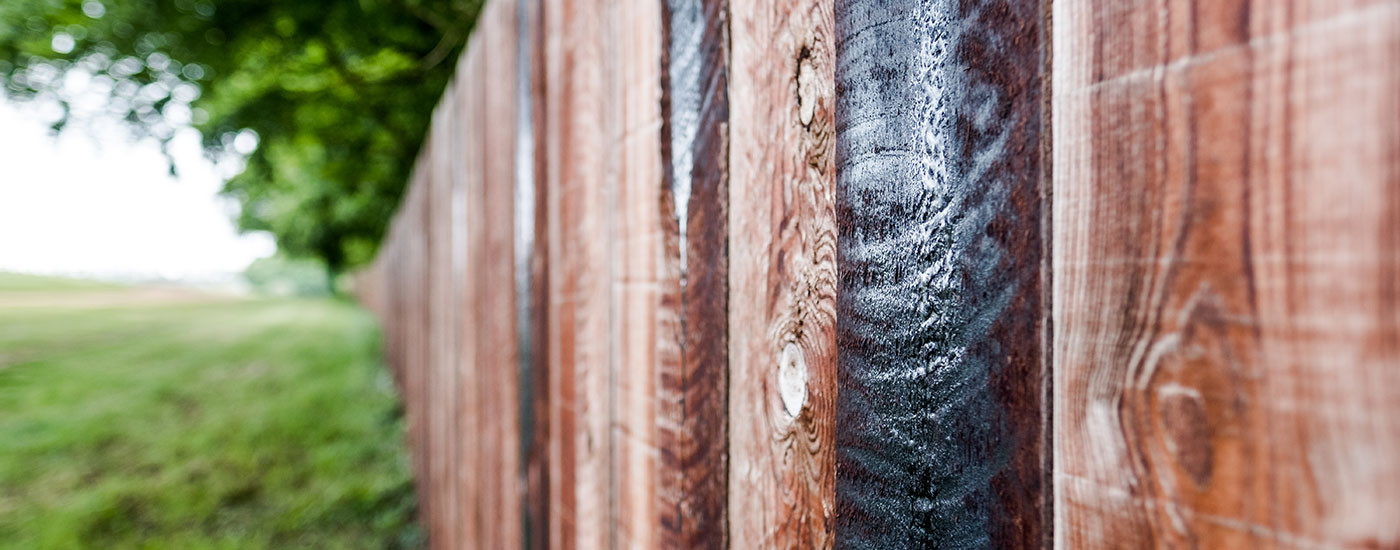The heartwood or inner core of a mature tree has some natural resistance to decay and insects, depending on the species, but the sapwood (younger, outer layers) is susceptible to fungi and insects and requires preservative treatment for greater durability.
What is creosote?
Creosote oil is a derivative of the tar that is released from coal during the coking process in the production of steel. An effective deterrent against timber eating insects and harmful fungi, creosote was the preferred method of timber preservation for over a hundred years. It was applied manually, usually with a brush, so that it thoroughly penetrated the timber.
Can you still buy creosote?
In 2003, the HSE (Health and Safety Executive) deemed creosote toxic to the environment and harmful to health, as it is a carcinogen. As a result, the use of creosote by retail customers was banned, and it was withdrawn from sale.
When creosote can and cannot be used
Under certain circumstances, for example in the railway and agricultural sectors, where there are no viable alternatives, creosote can be used by professionals for appropriate applications. These include agriculture, railways, fencing and equestrianism. Since 2003, timber that has been treated with creosote cannot be used in interiors, for toys or playgrounds, any outdoor facility where it could come into contact with skin, for example in parks and gardens, in the manufacture of growing containers such as planters, or in the manufacture of outdoor wooden furniture.
What is pressure treatment for timber?
Pressure treatment is a pressurised chemical treatment that is used as a method of timber preservation and is a popular alternative to creosote treatment, that is applied at source. Pressure treatment protects wood against environmental factors such as moisture, bacteria and insect infestation which could cause decomposition. Pressure treated timber is also referred to as tanalised timber when the chemical used is tanalith E.
How is timber pressure treated?
Usually carried out at sawmills or by timber merchants, pressure treatment involves removing the moisture from the timber before it is placed in a vacuum cylinder which removes air from the timber. Once this has been done, the cylinder is filled with the chemical preservative and high pressure is used to achieve a high level of penetration into the timber. A final vacuum is applied to remove excess preservative and, once the timber has dried, it is shipped to the customer. Chemicals used in pressure treatment are alkaline copper based, suitable for residential and commercial applications.
The benefits of pressure treated timber
Protection from environmental decay – preservatives used in pressure treatments safeguard the timber against fungi, microorganisms and moisture.
Durability – treated timber has a longer lifespan and will decay mush more slowly than untreated timber. It will also be protected against rain and snow.
Eco-friendly credentials – the increased lifespan of pressure treated timber means fewer trees will be felled to manufacture replacement products.
Aesthetics – pressure treated timber retains its natural appearance but if your prefer a painted finish, the pressure treatment gives the timber a smooth, matte surface ideal for painting.
Pressure treated timber products from Witham Timber
At Witham Timber, we supply pressure treated timber products to domestic and commercial markets. All our tanalised products are made from timber sourced from sustainable forests and are treated to the highest standards at approved sawmills. Our fencing, trellis and fencing components are pressure treated, as are our decking supplies, while our sheds can be supplied treated or untreated to suit individual requirements. Our pressure treated playhouses and planters all meet required safety standards and we offer a range of pressure treated garden furniture alongside our hardwood range.
Other alternatives to creosote
Where added protection is required for timber products, the Protek range of Shed and Fence Wood Treatments is a safe, water-based alternative to creosote with excellent eco credentials. Available in a selection of colours, the treatment is safe to use on children’s equipment and playhouses, planters and garden furniture, as well as fencing and sheds, and can be applied to pressure treated timber products where extra protection is required or where a colour is preferred.
If you have any questions about the treatments our timber products undergo prior to sale, our expert team is on hand to answer them. Simply call us on 01205 359188 or email us at sales@withamtimber.co.uk

